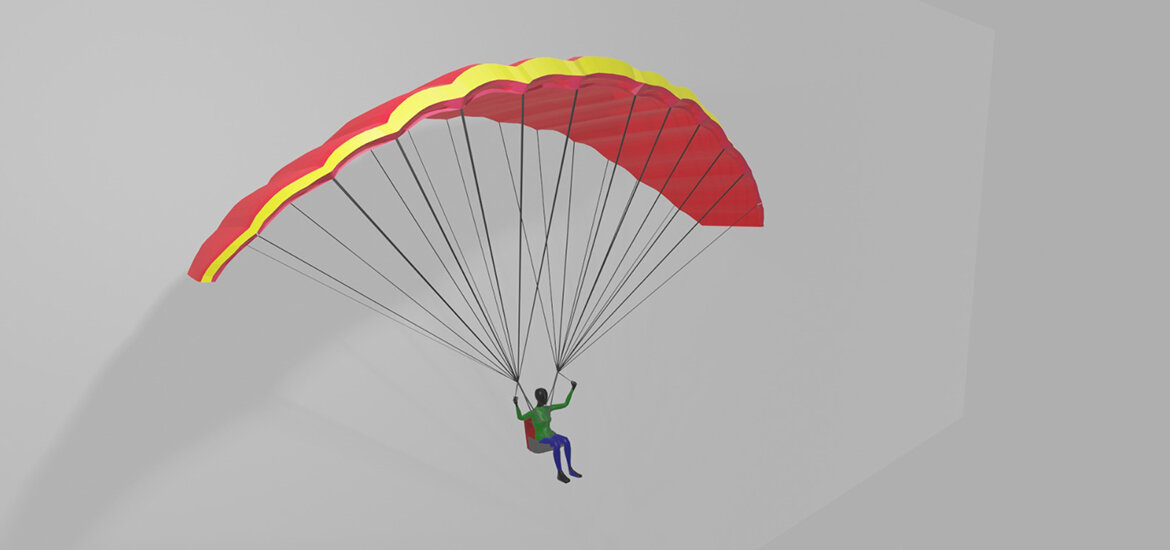Virtual paragliding flight over the Alps
- 17.02.2023
- Practical Project

3D model of the VR paraglider.
A group of students from the Master's program in Web Communications & Information Systems developed a VR game application for an original paraglider seat. The virtual game will be used in the future for lab tours and trade show appearances by the Kufstein University.
As part of a practical project, students in the Master's program in Web Communications & Information Systems (now the Master's program in Web Engineering & IT Solutions) developed a paraglider VR game application. The project group, consisting of Axel Basset, Tobias Czmaiduch, Thomas Dorfer, Julian Eisenmann, Bianca Kamper and Sarah Schauppenlehner, was supervised by Prof. (FH) Karsten Böhm and worked on the task for 15 weeks.
The students were given the task of implementing the project by Prof. (FH) Dr. Michael Kohlegger, Uni Vice-Rector and Director of Studies for the degree programs WEB, DSIA and WCIS. The aim of the project was to develop a VR game application for an original paraglider seat, provided by the company Nova. The VR game will be used in the future for lab tours, the open house of the Kufstein University or at trade shows to demonstrate the University of Applied Sciences' practical experience in the field of mixed reality.
PARAGLIDER SEAT CAN BE USED AS A PLAYING SURFACE
The paraglider seat was mounted on the ceiling of the Web Lab and serves as a gaming platform. The project was developed using numerous technologies. On the one hand, the game development platform Unity was used. On the other hand, the students used Stream VR to control the game with the HTC Vive headset and Vive Controller. Finally, the platform Blender was used as a 3D modeling program to develop the paraglider game character.
To enhance the game character, the students opted for a low-poly mountain landscape. The modeling was done directly in Unity. To avoid being limited by a limited world, the world was generated procedurally, allowing players to explore an infinite landscape.
In addition, thermal points were placed in the landscape, which, using a random principle, either mean an updraft or a downdraft for the paraglider. Players must skillfully navigate through the landscape to ultimately land on the landing pad branded with the logo of the University of Applied Sciences Kufstein Tirol. Some test players initially struggled with motion sickness due to the disparity between the movement of the paraglider seat and what was seen through the VR goggles. After some tweaks to the player positioning and the speed of the glide, this challenge was resolved.
PROJECT PROVIDES INSIGHT INTO INNOVATIVE TOPICS
The Vive controllers were attached directly to the ropes of the paraglider seat. At the end of the practical project, the client was also allowed to sit in the paraglider seat and experience the full immersion of the virtual flight over the Alps. “We are proud that our students were able to develop a novel prototype in the field of virtual reality in this practical project. The VR paraglider demonstrates how modern XR technology can help to give users insights into new topics that they would not be able to experience in the conventional way,” says Prof. (FH) Dr. Michael Kohlegger.
